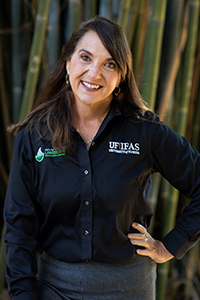Wendy's Wanderings
September 7, 2023
Pretty Tasty
Edible flowers are always a welcome sight in salads, soups, desserts, and drinks. They bring the beauty of the garden to the kitchen and dining room. There are a wide range of flowers that are edible, and fall is a wonderful time to get them growing. With varying shapes and colors, the flowers also have different flavors ranging from sweet to savory.
Nasturtiums are an easy edible flower to grow. Their yellow, red, or orange flowers look beautiful in a mixed green salad and the peppery flavor gives the dish some zing. Marigolds have similar colors, but the taste is more citrusy and fragrant. They are also wonderful in a salad or on a squash soup. The chopped leaves of chives are often included in recipes but you can add their blooms as well; the purple flowers have a milder taste but the same zest as the leaves.
If you allow your fall veggies like kale, broccoli, or mustard greens to go to flower, remember that their little yellow blooms are edible as well. They look tempting sprinkled on a side dish and add a splash of color to the plate. Cilantro, dill, and fennel blooms are wonderful herbs to grow in the fall and yes, their flowers are edible too.
Make sure the plants you're harvesting flowers from haven't been treated with sprays or pesticides—this includes chemicals to the soil as well. When collecting the blooms, harvest in the morning after the dew has dried. This time is best for capturing the best flower color and flavor. Store the flowers in the refrigerator in a moist paper towel, but be sure to use them the same day. Before use wash the blooms well to get any dust or hidden insects gone.
Not all flowers are edible though, in fact some are toxic. Proper identification and research on toxicity is imperative. I was reminded of this fact this summer when I ordered an adult beverage on a tropical beach.

Wendy's dangerous libation.
I was very excited to see a beautiful red bloom on my drink. It looked familiar put I couldn’t put my finger on it. I asked the mixologist, but he didn’t know its name and told me that he just randomly picks flowers from the local plants to decorate the drinks.
I took a photo of the cocktail's flower and used the my phone's plant ID app to help with identification. Thank goodness the internet was working—it was an oleander flower! That’s why it looked familiar. Oleanders contain a toxin that when ingested can be very harmful and even fatal to humans and pets. I set the drink aside and ordered another one “sin flor” (without the flower).
Let my travel tale remind you to definitively identify the flowers you are consuming, and when the bartender asks you to “name your poison,” be careful. In fact, whenever possible grow your own edible flowers. For more information, read "Edible Flowers" on UF/IFAS Gardening Solutions.
-- Wendy Wilber

